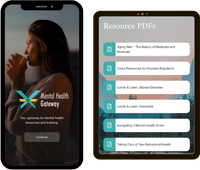Bullying is the repeated and intentional aggressive behavior directed toward an individual. Bullying can take different forms and can take place in various settings. Bullying, the motivation behind a bully, and the effects of bullying are complex and highly individualized topics that cannot be overgeneralized. Furthermore, there are many misconceptions about bullying. Understanding the reality behind these myths can inform you so you can better support those who are impacted by bullying.
If you are interested in more information on recognizing what bullying looks like, relating and supporting both the victims of bullying and bullies themselves, identifying when a victim of bullying should seek professional help, how to make a referral, and how to create a supportive community that supports those in mental distress, check out our webinar: Introduction to Bullying.
Myth # 1: Bullying only happens at school
Although we typically think about bullying occurring at school, and in school-aged children, this behavior can also take place in other settings. Bullying that occurs on online platforms, or cyberbullying involves using electronic communication to target and harm others. This type of bullying can occur 24/7, which causes significant emotional distress to victims.
Workplace bullying refers to ongoing, intentional, and targeted treatment directed toward an employee. These behaviors can cause physical, emotional, or psychological harm. Additionally, these behaviors create a hostile and toxic work environment. Examples of workplace bullying can include demeaning language, humiliation, and aggressive behavior directed at a victim. Victims of workplace bullying can experience increased stress, anxiety, depression, reduced job satisfaction, and even physical health issues.
Finally, bullying can happen within sports teams, music groups, treatment facilities, or other social settings. Bullying can even occur within families where one member may target another emotionally or physically.
Myth #2: Bullying builds character
Bullying is not a healthy or normal part of growing up. In fact, bullying often leads to psychological harm that goes into adulthood. Many adverse effects are found in both victims of the bullying as well as the bullies themselves such as anxiety, depression, and difficulties in their adult interpersonal relationships.
Additionally, for vulnerable individuals who experience mental health disorders bullying can be especially serious as it can worsen the symptoms of these disorders. These individuals are at risk for suicide. Watch our webinar: Introduction to Suicide and learn how to support someone who struggles with suicidality.
Myth #3: Bullies are always motivated by the same root cause
We typically think of bullies as being motivated by insecurities. The idea that a bully puts another individual down to make themselves feel better could be a possibility, but other factors contribute to the psychology of bullies. The psychology of bullies is complex and differs from individual to individual.
One reason some bullies act is to exert control over others. This could be caused by feeling a lack of control in some aspect of their life such as their home life. Finding vulnerable individuals who they can exert dominance over can make bullies feel a sense of power and control. Furthermore, this dominance can play a part in establishing a social hierarchy and popularity in some instances.
Additionally, bullies may be displaying behaviors that they have seen modeled. An individual may internalize and adopt aggressive tactics they have witnessed. Past victims of bullying may bully others to cope with their past experiences. Other factors that contribute to the psychology of bullying are low self-esteem, a lack of empathy, and environmental factors.
In conclusion, debunking the myths surrounding bullying is an important step toward fostering a more informed and compassionate society. If you are seeking further insights on recognizing, addressing, and preventing bullying we encourage you to watch our webinar: Introduction to Bullying. Thank you for doing your part in gaining awareness about bullying and check out our website and App for more mental health resources.
Visit our resources page for more information.


